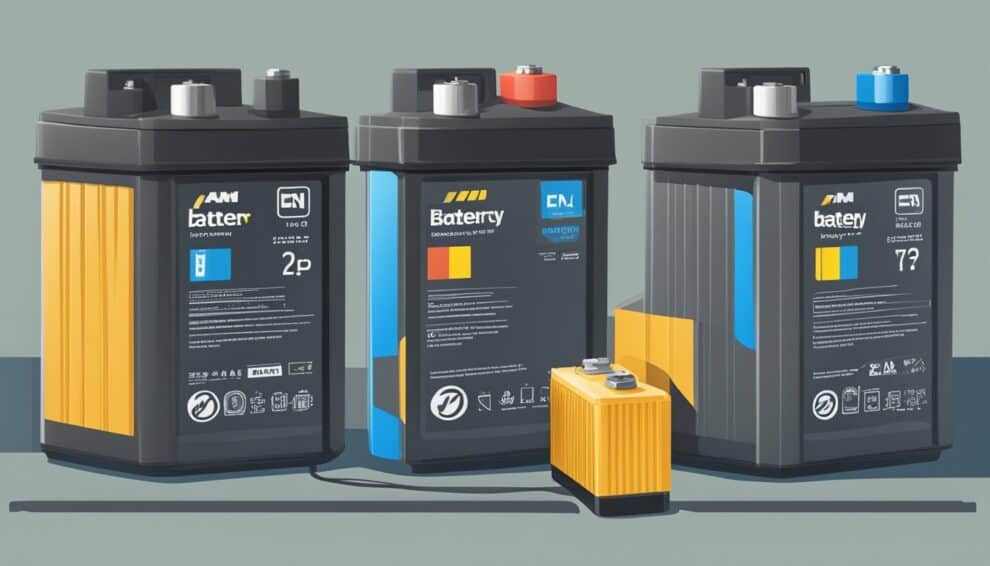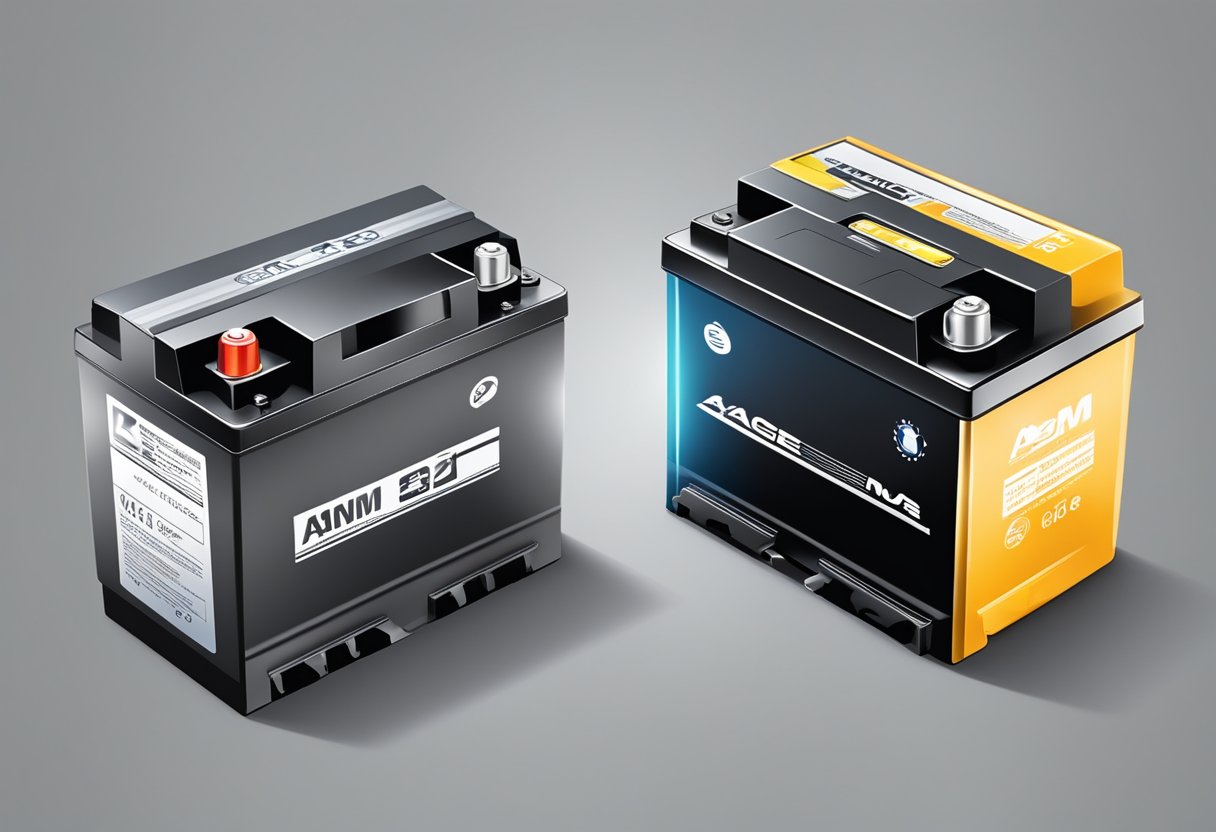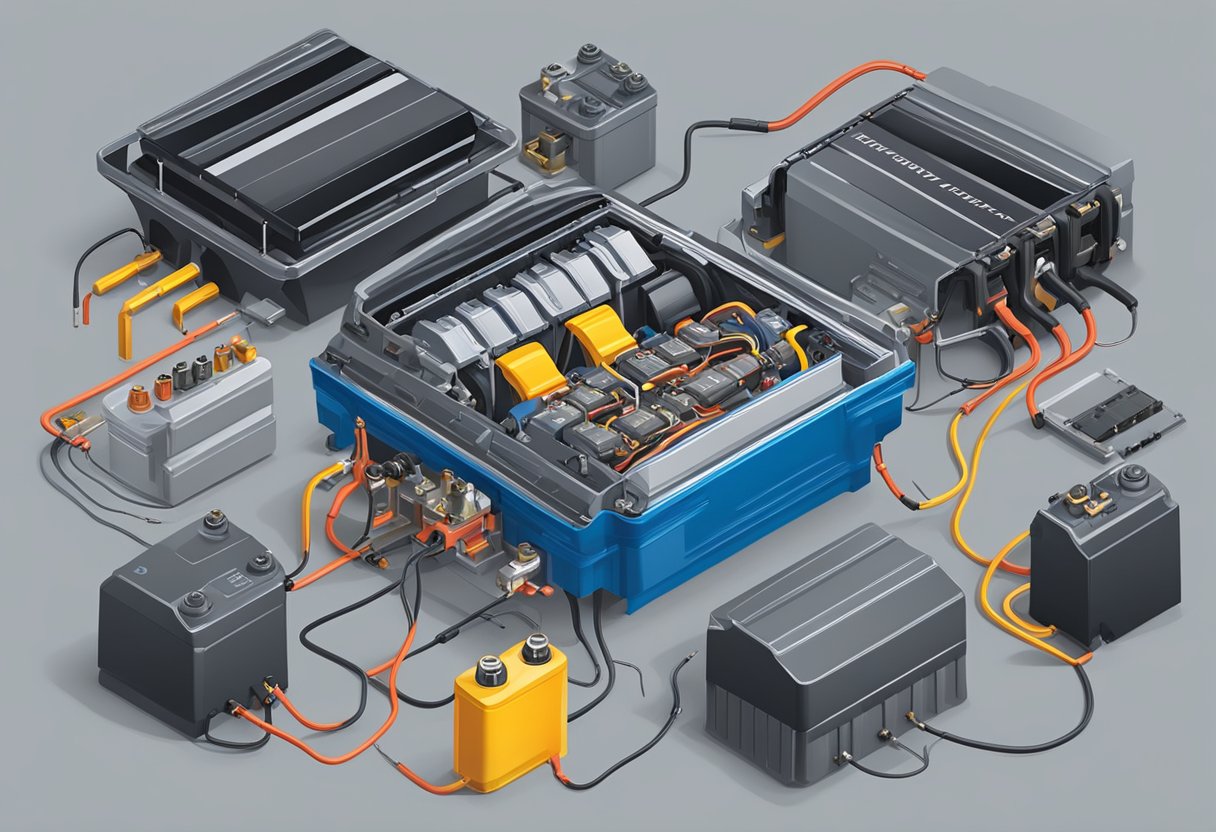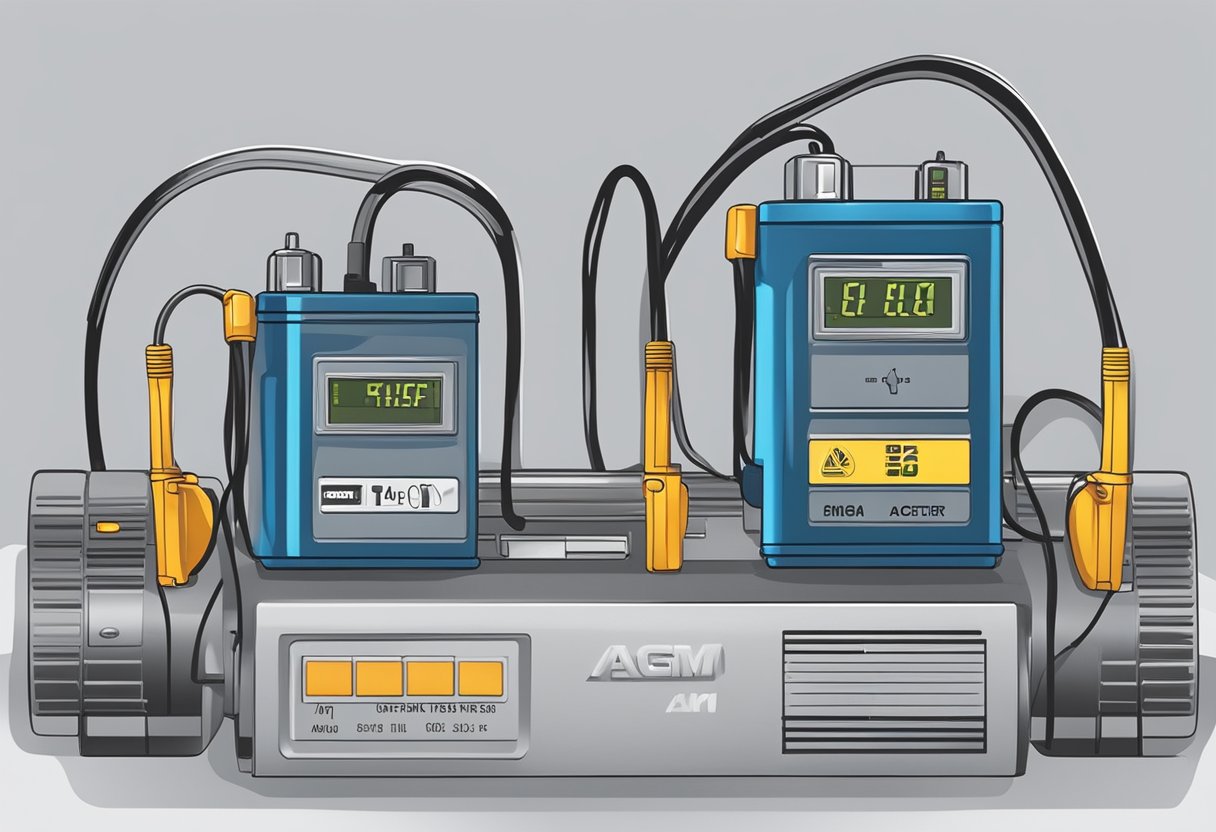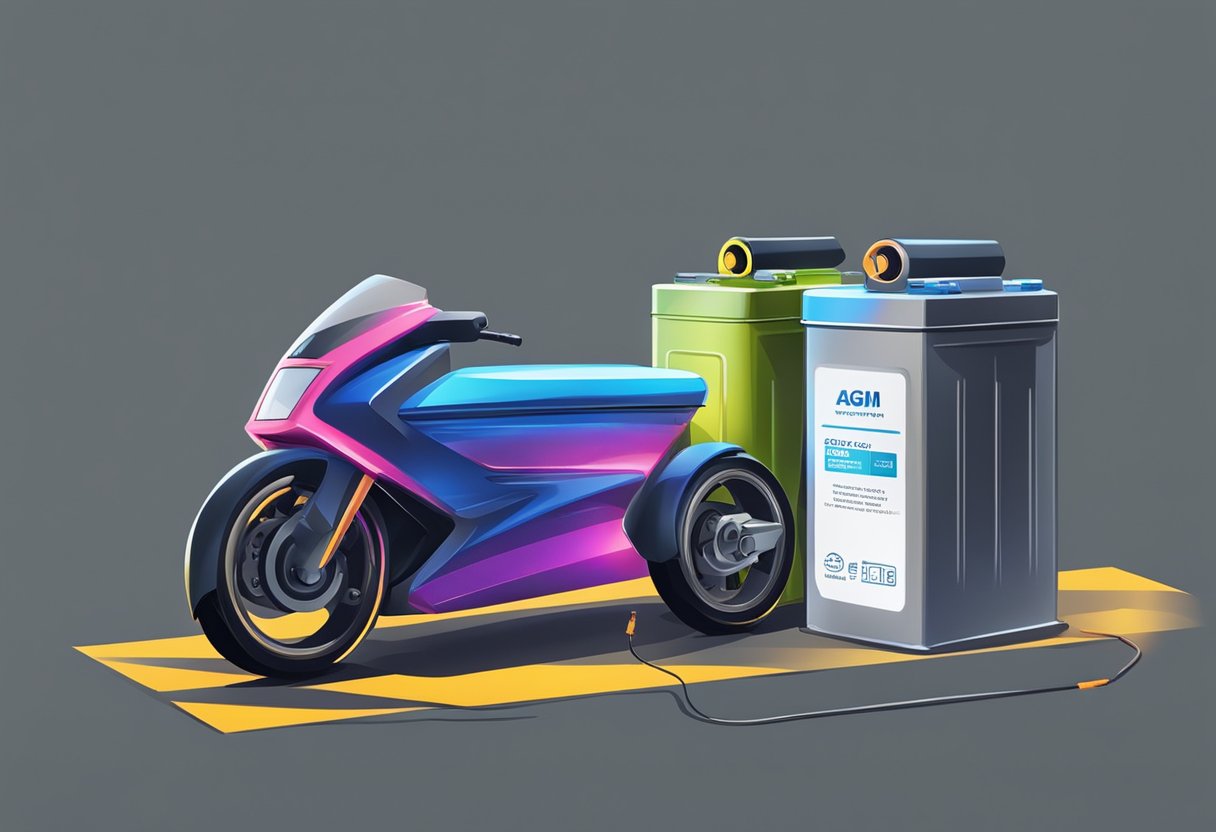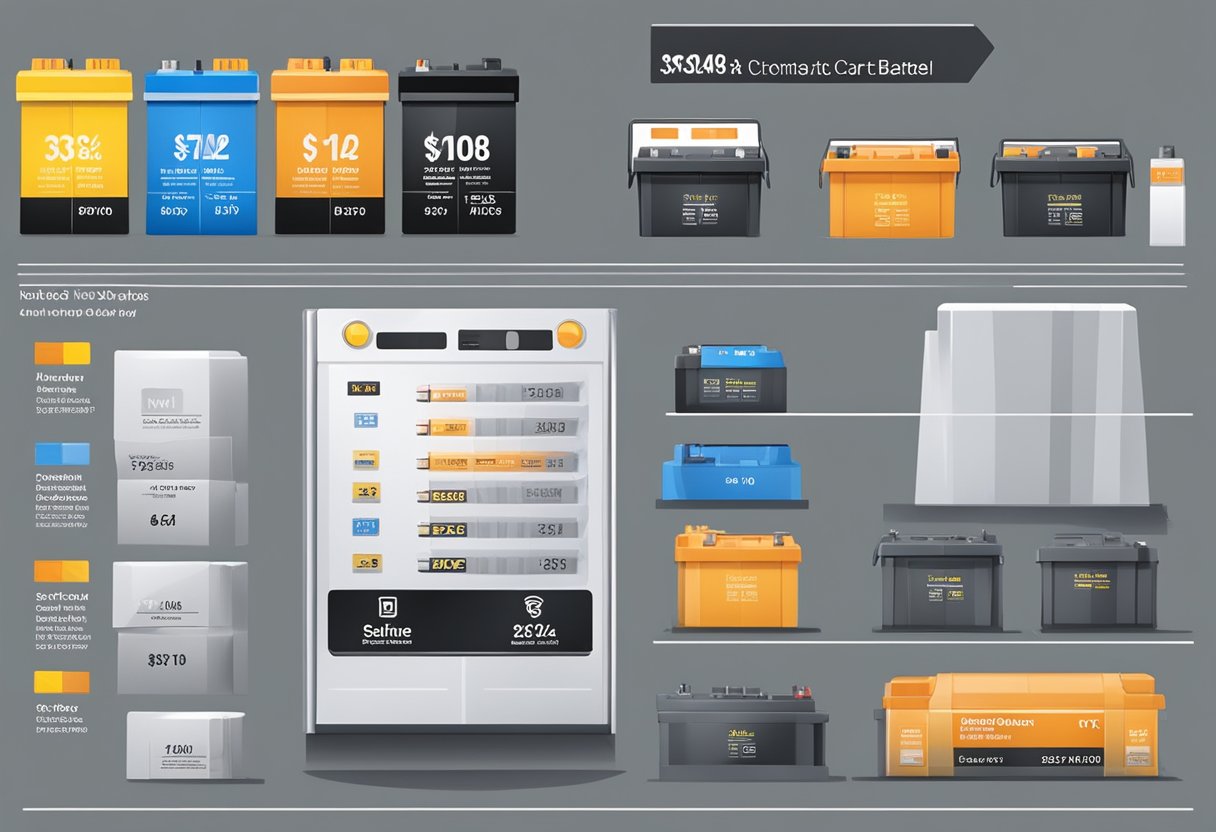When it comes to choosing a car battery, you may have heard the terms AGM and standard batteries thrown around.
But what do these terms mean, and which type of battery is better for your vehicle?
In this article, we will explore the differences between AGM and standard car batteries, and help you determine which one is right for your needs.
First, let’s define what AGM and standard batteries are.
AGM stands for Absorbent Glass Mat, which refers to the technology used in the battery’s construction.
AGM batteries have a special glass mat separator between the lead plates, which absorbs the electrolyte and holds it in place.
This design allows for a more efficient and reliable flow of electricity.
Standard batteries, on the other hand, use a liquid electrolyte that can spill or leak if the battery is damaged or tipped over.
So, which type of battery is better? The answer depends on your specific needs and preferences.
AGM batteries are generally more expensive than standard batteries, but they offer several benefits such as longer lifespan, faster charging, and better performance in extreme temperatures.
Standard batteries are more affordable and widely available, but they may not last as long or perform as well in certain conditions.
Ultimately, the choice between AGM and standard batteries comes down to your budget and the demands of your vehicle.
Understanding AGM Technology
Definition of AGM Batteries
AGM stands for Absorbent Glass Mat, which refers to the type of technology used in the construction of the battery.
AGM batteries are a type of lead-acid battery that use a specialized glass mat to absorb and hold the electrolyte solution.
The glass mat is designed to be very thin, which allows for a high surface area to volume ratio.
This results in a battery that is capable of delivering high amounts of power in a compact package.
How AGM Batteries Work
AGM batteries work by using a series of chemical reactions to store and release electrical energy.
When the battery is charged, lead dioxide is formed on the positive electrode and lead is formed on the negative electrode.
When the battery is discharged, the lead dioxide is converted back into lead on the positive electrode and lead sulfate is formed on the negative electrode.
One of the key advantages of AGM batteries is their ability to deliver high amounts of power in a short period of time.
This makes them ideal for use in high-performance vehicles, such as race cars and sports cars.
AGM batteries are also highly resistant to vibration and shock, which makes them ideal for use in off-road vehicles and other harsh environments.
In addition to their high performance and durability, AGM batteries are also known for their low maintenance requirements.
Unlike traditional lead-acid batteries, AGM batteries do not require regular topping off with distilled water.
This makes them a convenient and hassle-free option for many vehicle owners.
Overall, AGM batteries offer a number of advantages over standard car batteries.
They are highly durable, deliver high amounts of power, and require minimal maintenance.
If you are looking for a high-performance battery for your vehicle, an AGM battery may be the right choice for you.
Exploring Standard Car Batteries
Composition of Standard Batteries
Standard car batteries are typically lead-acid batteries, which consist of lead plates submerged in an electrolyte solution of sulfuric acid and water.
The lead plates are coated with lead oxide, which reacts with the sulfuric acid to produce lead sulfate and hydrogen ions.
The hydrogen ions combine with the sulfate ions to form sulfuric acid, which completes the chemical reaction and generates electrical energy.
The electrolyte solution in standard batteries is typically around 25% sulfuric acid and 75% water.
The lead plates are separated by insulating material to prevent short circuits, and the battery is enclosed in a plastic or rubber casing to prevent leaks.
Functionality of Standard Batteries
Standard car batteries provide electrical power to start the engine, operate the lights, and power other electrical components of the vehicle.
When the ignition key is turned, the battery sends electrical current to the starter motor, which cranks the engine to start it.
Once the engine is running, the alternator takes over and recharges the battery while also powering the electrical systems.
Standard batteries have a limited lifespan and typically last between 3 to 5 years, depending on usage and maintenance.
Regular maintenance, such as checking the fluid levels and keeping the terminals clean, can help prolong the life of the battery.
Overall, standard car batteries are a reliable and cost-effective option for most vehicles.
However, they may not be suitable for vehicles with high energy demands or extreme temperatures.
In such cases, an AGM battery may be a better choice.
Comparative Analysis
When it comes to choosing between AGM and standard car batteries, there are several factors that you should consider.
In this section, we will compare the two types of batteries based on their performance metrics, lifespan and durability, and maintenance requirements.
Performance Metrics
AGM batteries are known for their superior performance metrics when compared to standard batteries.
They have a higher cold cranking amps (CCA) rating, which means they can deliver more power to start your car in cold weather conditions.
AGM batteries also have a higher reserve capacity (RC), which means they can provide power for a longer period of time without needing to be recharged.
On the other hand, standard batteries have a lower CCA and RC rating than AGM batteries, which means they may struggle to start your car in extreme weather conditions.
However, standard batteries are generally more affordable than AGM batteries, which can be a deciding factor for some car owners.
Lifespan and Durability
When it comes to lifespan and durability, AGM batteries have a clear advantage over standard batteries.
AGM batteries are designed to last longer and can withstand more cycles of charging and discharging than standard batteries.
They are also more resistant to vibration and shock, which can damage standard batteries over time.
Standard batteries, on the other hand, have a shorter lifespan and are more prone to damage from vibration and shock.
They may also require more frequent maintenance to ensure they are functioning properly.
Maintenance Requirements
AGM batteries require less maintenance than standard batteries.
They are sealed, which means they do not require topping up with distilled water like standard batteries do.
AGM batteries also have a lower self-discharge rate, which means they can be stored for longer periods without needing to be recharged.
Standard batteries, on the other hand, require more maintenance to ensure they are functioning properly.
They need to be topped up with distilled water regularly and may require a trickle charger to keep them charged when not in use.
In conclusion, both AGM and standard car batteries have their pros and cons.
AGM batteries offer superior performance metrics and a longer lifespan, but they come at a higher cost.
Standard batteries are more affordable but have a shorter lifespan and require more maintenance.
Ultimately, the choice between the two types of batteries will depend on your specific needs and budget.
Suitability for Different Vehicles
When it comes to choosing between an AGM and a standard car battery, the type of vehicle you have plays an important role in determining which is better suited for your needs.
Here are some factors to consider:
AGM Batteries in Modern Cars
If you have a modern car that has advanced features like start-stop technology or regenerative braking, an AGM battery may be a better choice for you.
AGM batteries are designed to handle the high demands of these features and can provide the necessary power to keep them running smoothly.
AGM batteries are also ideal for cars with a lot of electronic accessories, such as GPS systems, sound systems, and heated seats.
These accessories can drain a standard battery quickly, but an AGM battery can handle the load without a problem.
Standard Batteries in Older Models
If you have an older car that doesn’t have advanced features or a lot of electronic accessories, a standard battery may be a better choice for you.
Standard batteries are typically less expensive than AGM batteries and are perfectly capable of providing the power needed to start your car.
However, if you do have electronic accessories in your older car, it’s important to make sure that the battery you choose has enough power to handle them.
In some cases, a standard battery may not be sufficient and an AGM battery may be necessary.
In summary, when choosing between an AGM and a standard car battery, it’s important to consider the type of vehicle you have and the demands that will be placed on the battery.
AGM batteries are better suited for modern cars with advanced features and electronic accessories, while standard batteries are a good choice for older models without these features.
Cost Considerations
Initial Purchase Price
When it comes to initial purchase price, standard car batteries are generally less expensive than AGM batteries.
Standard batteries can cost anywhere from $50 to $150, while AGM batteries can cost anywhere from $150 to $300.
However, it’s important to keep in mind that the price can vary depending on the brand, size, and other factors.
Long-Term Value
While standard car batteries may be less expensive upfront, they may not provide the same long-term value as AGM batteries.
AGM batteries have a longer lifespan than standard batteries and require less maintenance, which can save you money in the long run.
Additionally, AGM batteries are more resistant to vibration and can better handle deep discharges, which can extend their lifespan even further.
Overall, while AGM batteries may be more expensive upfront, they can provide better long-term value and require less maintenance.
However, if you’re on a tight budget and don’t require the additional features of an AGM battery, a standard battery may be a more cost-effective option.
As an Amazon Associate we earn from qualifying purchases.







